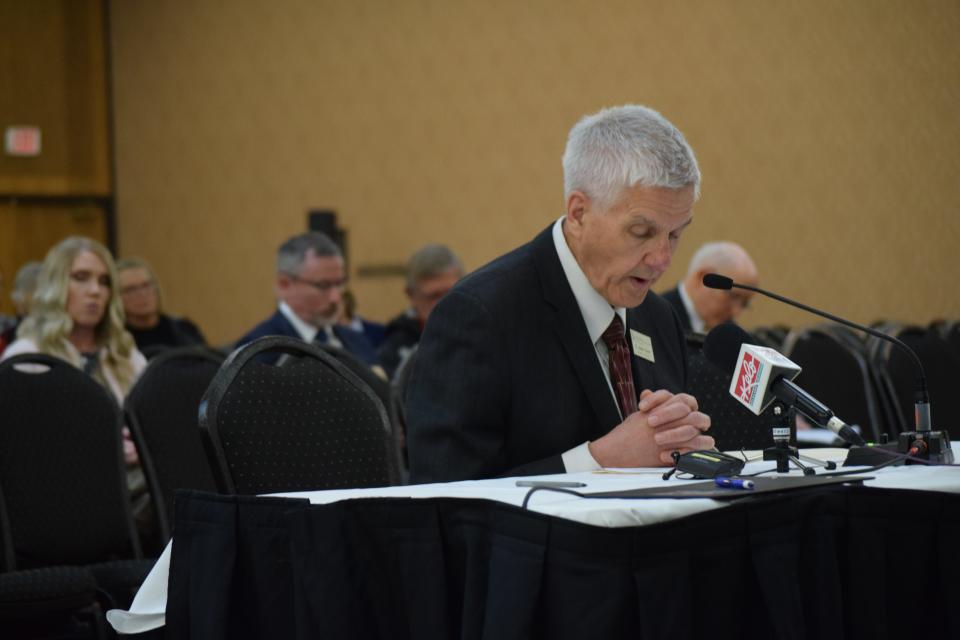How Education Secretary Joe Graves plans to improve South Dakota's literacy rates
One of Joe Graves’ first big initiatives during his tenure as Secretary for the South Dakota Department of Education is focused on literacy and the science of reading.
“The ability to read is foundational to all learning,” Graves said in a press release. “Up until about third grade, students are learning to read; after that, they are reading to learn.”
This is why the DOE is starting to provide extensive, voluntary professional development to teachers and districts across the state in the science of reading.
The professional development is free and will be either virtual or in-person instruction to educators on how to teach phonics and what phonetic awareness looks like; education consistent with the five pillars in the science of reading. Training will be offered by the AIM Institute for Learning & Research, and the courses are being offered free of charge with DOE funding from the American Rescue Plan.
This development is part of the DOE's goal to increase literacy in South Dakota. The most recent state report card, from 2021-2022, shows 51% of South Dakota's students were proficient in English Language Arts exams, and 53% of students are learning and improving in ELA.
The 'science of reading'
Graves wrote in a recent op-ed about how there should be more of an emphasis from an early age on phonics — learning what sounds letters and letter combinations make, and then sounding out words — than on a “whole language approach.”
For example, Graves wrote in his op-ed about how he loved when his mom read stories by Dr. Seuss to him at bedtime, but when his mother taught him to read, it was with books like William Gray’s “Dick and Jane” that provided simple stories with a few easy-to-read words, allowing beginner readers to actually read the book and complementing early phonics lessons.
Books like classic Dr. Seuss tales went beyond the basics of “Dick and Jane” books necessary for children to grasp phonics and convinced people early reading was about not just simple, short and common words, but also had to be entertaining and effortless to young children.
That idea gave way to the concept of “whole language,” Graves explained, calling it “misguided methods of ‘teaching’ reading which didn’t teach children how to read at all.” He still thinks Dr. Seuss has a time and place, just not in reading instruction.

He describes “reading wars” in which pro-phonics traditionalists were “marginalized as old-fashioned (and) out-of-step,” but now, decades of research has shown how the science of reading, and phonics, won those “reading wars.”
Phonetic awareness, phonics, vocabulary, fluency and comprehension are five pillars that fit into the basic instruction framework for teaching reading, Graves explained.
More: State K-12 report card shows absence is still an issue in South Dakota's schools
What will educators benefit from this?
Schools that participate will also receive support for local implementation such as technical guidance, documents and learning opportunities for school staff from paraprofessionals and teachers to school administrators.
The Education Secretary “doesn’t have any business recommending particular materials,” but there are a number of curriculum companies out there, and districts have a very easy method to look and see which materials will fit the science of reading well, Graves said.
Positive results in teaching the science of reading have already been seen in both the Sisseton and Tea Area School Districts, Graves said, noting Tea was “very clearly making very great headway in terms of making sure that all of their students were proficient readers.”
English Language Arts standards were last adopted in 2018, but will be up for review soon in time for four public hearings across the state during the 2024-2025 school year. There’s potential for more of the “science of reading” to be included in those standards, Graves noted. Students are tested in ELA standards in third through eighth grade, and in eleventh grade.
More focus on the science of reading is also going to be implemented into teacher preparation programs at colleges and universities in the state, too, Graves said.
This article originally appeared on Sioux Falls Argus Leader: South Dakota Department of Education kicks off reading initiative

